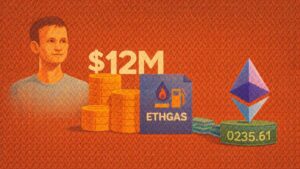TL;DR
- Liquid restaking is a new trend that allows users to stake their ETH on multiple networks, increasing their security and earning potential.
- EigenLayer is a protocol that enables liquid restaking by issuing LRTs, which represent the user’s stake and rewards on both Ethereum and EigenLayer.
- Liquid restaking has several benefits, such as liquidity, flexibility, and capital efficiency, but also some challenges, such as security, scalability, and regulation.
The crypto market has witnessed a new trend in the field of staking: liquid restaking. This innovative concept allows users to stake their ether (ETH) on multiple blockchain networks, enhancing their security and earning potential. According to data from Dune, the total value locked (TVL) in liquid restaking protocols has surpassed $3.5 billion, indicating the growing interest and demand for this niche.
Liquid restaking is enabled by EigenLayer, a decentralized Ethereum restaking protocol that acts as a bridge between Ethereum and other protocols. Users can deposit their liquid staking tokens (LSTs), such as stETH, rETH, or Lido, into EigenLayer’s smart contracts and receive liquid restaking tokens (LRTs) in return. These LRTs represent the user’s stake on both Ethereum and EigenLayer, as well as the rewards and fees generated from both networks.
There has been a noticeable uptick in deposits across various protocols such as Etherfi, Renzo, Kelp, Puffer, and others. This surge can be attributed to users choosing to leverage EigenLayer via these platforms, a move that ensures they retain access to their funds.
Among these Liquid Restaking Tokens (LRTs), Etherfi leads the pack with the highest Total Value Locked (TVL), surpassing the $1.3 billion mark. Kelp follows with user deposits exceeding $460 million, while Renzo boasts a TVL of $346 million.
Puffer, a new addition to the LRT ecosystem, has experienced a swift surge in deposits, surpassing the billion-dollar threshold shortly after its inception. Other less prominent LRT protocols comprise Bedrock with a Total Value Locked (TVL) of $89 million, Swell with a TVL of $66 million, Prime with a TVL of $29 million, and ClayStack with a TVL of $6.8 million.
The Benefits and Challenges of Liquid Restaking

Liquid restaking has several advantages over traditional staking, such as increased liquidity, flexibility, and capital efficiency. Users can access their funds at any time, without having to wait for the withdrawal period or incur penalties. They can also participate in various DeFi activities, such as lending, borrowing, or swapping while holding their LRTs. Moreover, they can optimize their returns by restaking their ETH on multiple networks, rather than just one.
However, liquid restaking also comes with some challenges and risks, such as security, scalability, and regulation. Users have to trust the liquid restaking protocols and their smart contracts, which may be vulnerable to hacks or bugs. They also have to deal with the complexity and volatility of the restaking ecosystem, which may affect their rewards and fees.
Furthermore, they have to comply with the regulatory frameworks of different jurisdictions, which may vary or change over time. Liquid restaking is a novel and promising concept that aims to revolutionize the staking industry.
It offers users a new way to stake their ETH and support the security and innovation of multiple blockchain networks. As the restaking ecosystem grows and matures, it may attract more users and investors, as well as foster more collaboration and interoperability among protocols.










